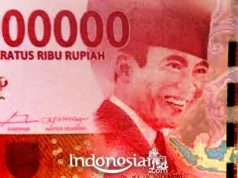Indonesia is an archipelago country that has a variety of local wisdom in the ritual traditions of each ethnic group. One of the ritual traditions in Indonesia that has local wisdom is the Laluhan ritual.
Laluhan is a tradition of the Dayak Ngaju community that is still preserved by the people of Kapuas Regency in Kalimantan and even recently, cultural attractions as well as rituals have always enlivened the highlight of the anniversary of Kuala Kapuas City (the capital of Kapuas Regency) which is celebrated every March 21.
For the Dayak Ngaju people in Kapuas Regency, the tradition of laluhan is often associated with a traditional event called tiwah, which is a kind of ceremony to remove the bones of someone who has died and is buried, then transferred to a small building called a sandung.
Laluhan comes from the word laluh which means gift. In practice, laluhan is the delivery of gifts from one villager to another villager who is holding a tiwah ritual ceremony. This gift, which is delivered using a raft or other water transportation, is an expression of togetherness, a form of mutual cooperation and social solidarity.
In connection with the tiwah ceremony, the aim of laluhan is to reduce the burden on the family who is holding the tiwah ceremony, considering that this ritual is quite expensive. This traditional ceremony is usually led by traditional and religious leaders in the local community. Water facilities in the form of a klotok, barge, canoe, raft, or boat filled with ornaments ornate with Dayak culture, are used to load and deliver gifts.
The types of goods given are quite diverse, such as: a) Metu negligence, if what is delivered / given is a sacrificial animal (buffalo, cow or pig); b) Laluhan Daun, if one is delivered / given a kind of leaf to cook Kanihi rice (typical local community rice); c) Laluhan Sapundu, in the form of a wooden statue to tie the sacrificial animals to.
In the water transportation, there are a number of people who play local traditional musical instruments such as gongs, kenongs, baboons, flutes, violins and so on, while singing songs typical of the local community. The ceremony associated with the ancestral beliefs of the Dayak Ngaju tribe in the local area (Kaharingan) is not only carried out before the removal of the bones of people who have died, because laluhan consists of several types.
Among the types of Laluhan rituals consist of :
1. Neglecting at the Tiwah Ceremony.
This Laluhan ritual is carried out during the tiwah ceremony, which is a ceremony for taking the bones of someone who has died. This ceremony is a related ceremony.
In this ritual process, the bones of people who have died are taken from the lewu liau (liang lahat) and then put into the lewu tatau. Lewu tatau is also called stumbling block or a place for storing bones.
2. Neglecting at the victory ceremony.
Held at the time of returning in victory after fighting the enemy.
3. Laluhan welcomes the victory against thousands of diseases that afflict rural and urban communities.
Apart from being part of the tiwah traditional ceremonies, the laluhan event has now been packaged in such a way as a cultural attraction. Its implementation is enlivened by holding traditional war parties, water wars, and throwing suli plant stems at each other as a symbol of replacing spear weapons.
This war attraction is a symbol of the persistence of the Dayak people in defending their territory from enemy interference. Or today it can also be translated as a symbol of the persistence of local residents to fight poverty and underdevelopment, so that they can become a developed society and support development efforts, especially in Kapuas District and in general in Central Kalimantan Province.
One example of the implementation of laluhan is laluhan which aims to get rid of bad luck and disease. The implementation is led by Dayak elders / Kapuas Dayak community leaders who equip themselves with a Dohuk / Tumbak.
They boarded a very ship together with local officials and invited guests. This ship was pushed towards the sea by saying “Oh my gianku if mikeh tege je leket manarantang hung the ship peri je mimbit, Ladies and Gentlemen, Well-known regional officials, because of the speech of Dahiang, the age of Sampar Saribu Sasabutan Bitie?”.
In general, the sentence is in the form of an incantation or prayer to get rid of bad luck and various diseases that accompany the people on board the very. The ship will be carried around in the river for 3 times. On the 3rd round, a wooden spear from a suli plant is thrown.
This throwing means fighting all obstacles and passions, all of which are thrown / drowned in the sea so as not to cause disturbance to the community. After that, the very ship anchored at the port of Rujab. Come on, get other interesting information from Indonesiar.com






























